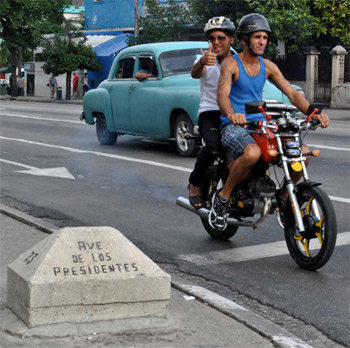Cubans Collecting Scraps on the Side
Jorge Milanes Despaigne

HAVANA TIMES, March 4 — They slipped out of the back of the cafeteria and immediately began running at full speed down the street with a bucket. Behind them a police officer whistled trying to get them to stop.
At that moment, I stopped to watch from across the street. “That’s the mess they’ve gotten themselves in,” said one man. “They’re gonna get hit with one hellofa fine – and so is the poor guy who sold it to them, because there’s no one here who’s going to eat what he cooks.”
In the 1980’s and early 90’s, most cafeterias and restaurants food would put all their leftovers to the side. I remember how back then trucks would frequently come to pick up the refuse vats for feeding state-owned pigs.
Later, during the Special Period crisis of the 90’s, there was a lack of gas and not enough transportation to ensure regular collections, so they started letting people collect those scraps. That was in the best case scenarios because many were closed due to their not having anything to sell.
Faced with the impossibility of the state being able to collect the refuse, along with the timely appearance of opportunities for selling such supplies of scraps, an underground market was created to meet the demand of people who raised marketable animals, like pigs and chickens.
The price of a bucket of these leftovers used to be twenty pesos in national currency (about $.80 USD) – now it’s fifty.
Obviously, on one hand it’s a source of income for those engaged in such pursuits, and on the other — in an effort to ensure a little income — food service workers purposely fail to cook quality food.
I don’t know of good food being prepared in hospitals. The meals meet the dietary requirements dictated by the doctors, but they simply aren’t eatable.
That’s how most leftovers reach the clandestine collectors.
Today when people cook food, the conditions exist for it to be properly prepared, but that doesn’t happen.
There’s a veiled intention: it’s for people practically not to eat what’s served at different popular dining halls and institutions, and therefore what’s left can be sold.





